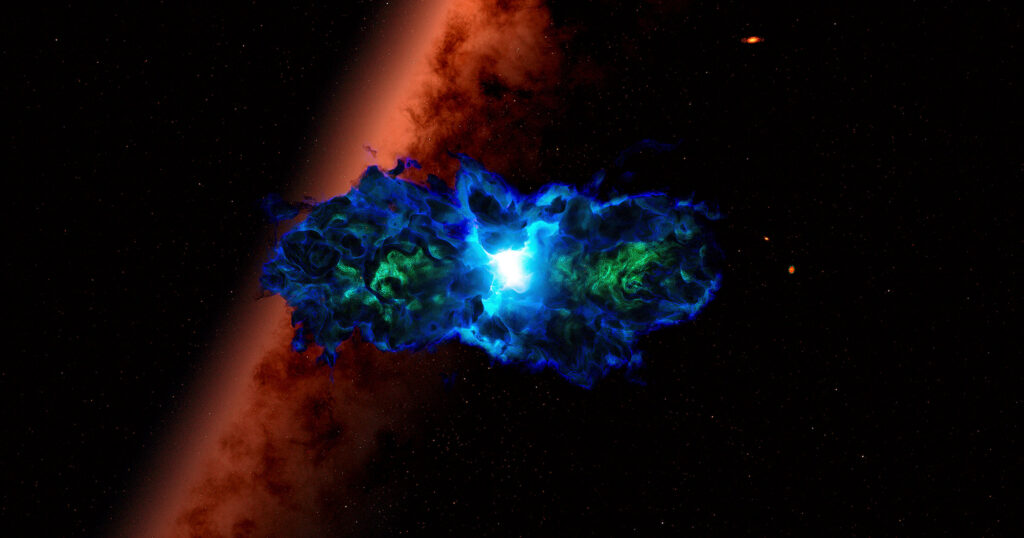
NASA’s James Webb Space Telescope (JWST) may have identified the universe’s first “dark stars,” a theoretical category of celestial bodies that differ significantly from the stars powered by nuclear fusion. This intriguing possibility is detailed in a recent paper published in the journal Proceedings of the National Academy of Sciences. Researchers propose that, just a few hundred million years after the Big Bang, these supermassive dark stars could have existed, powered by dark matter before eventually collapsing.
According to lead researcher and astrophysicist at Colgate University, Cosmin Ilie, “Supermassive dark stars are extremely bright, giant, yet puffy clouds made primarily out of hydrogen and helium, which are supported against gravitational collapse by the minute amounts of self-annihilating dark matter inside them.” Dark matter, an invisible and hypothetical substance, is believed to constitute approximately 25 percent of the universe but has yet to be directly observed.
The potential identification of these supermassive dark stars could provide insights into why JWST has observed bright and surprisingly abundant galaxies in the farthest reaches of the universe. The supermassive black holes that may arise from these dark stars could also explain the formation of distant quasars, which are exceptionally luminous galactic nuclei powered by black holes at the centers of galaxies.
Unveiling the Dark Star Theory
The theory behind dark stars was first introduced in the late 2000s. Researchers believe these stars could result from Weakly Interacting Massive Particles (WIMPs), a primary candidate for dark matter. These particles are theorized to annihilate each other, generating heat that manifests as brightly shining stars. The conditions shortly after the Big Bang, specifically around 300 million years, may have been conducive for the formation of these dark stars.
Co-author and astrophysicist at The University of Texas at Austin, Katherine Freese, stated, “For the first time, we have identified spectroscopic supermassive dark star candidates in JWST, including the earliest objects at redshift 14, only 300 million years after the Big Bang.” The mass of these early dark stars is estimated to be around one million times that of the Sun, playing a critical role in understanding dark matter and acting as precursors to the early supermassive black holes observed by the JWST.
In 2023, Freese and her colleagues identified several candidates for supermassive dark stars using images captured by the JWST’s Near-Infrared Camera (NIRCam). This instrument is designed to take high-resolution images in the near-infrared spectrum, allowing researchers to study the universe’s earliest galaxies. The recent paper builds on these findings, utilizing data from the telescope’s Near-Infrared Spectrograph (NIRSpec) to identify four spectroscopic dark star candidates, including one that is the second most distant object ever observed.
Significance of the Findings
Ilie and his team believe they may have discovered a “potential smoking gun signature of a dark star,” which includes a “1640 Angstrom absorption dip” in the spectrum of one of the candidates. Angstrom, a unit of measurement equal to one hundred-millionth of a centimeter, is commonly used to express wavelengths of light.
While this research marks a noteworthy advance in the quest to understand the universe’s earliest epochs, significant investigation remains before the existence of supermassive dark stars can be confirmed. Nevertheless, these findings offer a promising avenue for scientists striving to decode the nature of dark matter, one of the most complex and elusive puzzles in contemporary astronomy.







